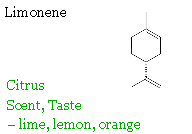A research paper in progress
Plants attract or repel
- insects
- birds
- herbivores
- germs, bacteria, viruses, fungi
With scents and spices
Cinnamon, Citrus, Pine oils
note: these are lipids / oil
Insects
- repelled
- to avoid egg laying moths
- caterpillars eat leaves
- egg laying flies
- larva eat roots
Bees
- attracted
- cross pollination
- plants feed bees with flower nectar
Birds
- do not chew or damage the seed
- bird droppings contain intact seeds
- environmental distribution of seeds by birds
- birds eat aphids and ants that harm plants
- plants feed birds with tasty fruit sugar
- a symbiotic relationship
Bacteria, viruses, fungi
plant scents reduce germs
- repels germs on plant
- affects entire environment
- repels germs in clouds
- increases UV light
- reduces cloud cover
- germs block UV rays
- prevents global warming
- de-germed clouds drop rain
- de-germed air allows sunshine
- amazon rain forest
- pine forest smell
- citrus smell
- repels germs in soil
Citrus zest, the skin, marmalade
- kills germs
- repels insects
- irritates insect breathing
- low human toxicity
- stops headaches

Pine oil
distinguished from other pine products
- not pine-nut oil
- avoid pine-nuts
- not turpentine
PIne oil
- pine sap
- remaining thick tar after turpentine is distilled
- pine-sol, household cleaner
- originally contained pine oil
- stopped pine oil in 2013, limited oil supply
- pine-tar, shampoo
- difficult to find with pine oil
- limited pine oil supply
- fights dandruf
- skin fungi
- kills germs
- repels insects
- insects have trouble breathing
- low human toxicity
Pine oil - kills germs:
- candida
- Brevibacterium ammoniagenes
- the fungi Candida albicans
- Enterobacter aerogenes
- Escherichia coli
- household germs
- Gram-negative household germs
- Gram-negative enteric bacteria
- salmonellosis
- herpes simplex types 1 and 2
- influenza type A
- influenza virus type A/Brazil
- influenza virus type A2/Japan
- intestinal bacteria
- Klebsiella pneumoniae
- odor-causing bacteria
- mold
- mildew
- Pseudomonas aeruginosa
- Salmonella choleraesuis
- Salmonella typhi
- Salmonella typhosa
- Serratia marcescens
- Shigella sonnei
- Staphylococcus aureus
- Streptococcus faecalis
- Streptococcus pyogenes
- Trichophyton mentagrophytes
- low toxicity to humans
- germs that cause
- typhoid
- gastroenteritis (some germs)
- rabies
- cholera
- several forms of meningitis
- whooping cough
- gonorrhea
- several types of dysentery
- diarrhea with blood
- may include fever
- abdominal pain
- feeling of incomplete defecation
- dehydration
- usually the bacteria Shigella
- not effective against spore related illnesses, e.g.
- tetanus
- anthrax
- not effective against non-enveloped viruses, e.g.
- poliovirus
- rhinovirus
- hepatitis B
- hepatitis C
Sensory nerves respond to Transient Receptor Potential - TRP
A few types
- taste
- sour
- sweet
- savory (meat)
- temperature
- hot
- cold
- texture
Main atoms
- sodium
- potassium
- calcium
Started June 24, 2020 rdid625